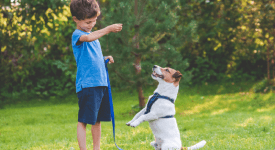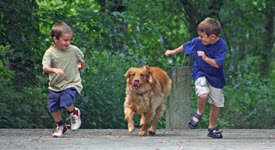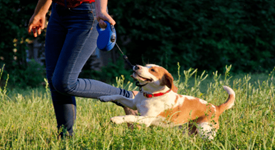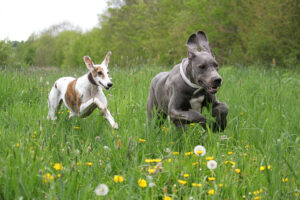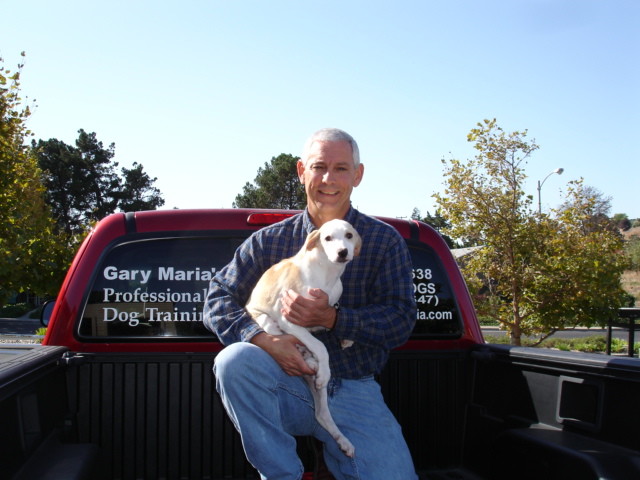Once your puppy or dog has successfully completed basic on-leash training and voice commands, and the role of pack-leader has been established for the dog, it is ready for off-leash training.
Second, you’ll also need to make sure your dog isn’t behaving aggressively on the leash. This behavior is known as “leash aggression”. If the dog is behaving aggressively on its leash then aggressive dog training intervention is required before off-leash training should be pursued.
Many dogs appear to show more aggression towards people and/or dogs when on-leash and less when off-leash. This is very easily explained; when dogs are on-leash and not properly trained we try to restrain the dog from pulling on the leash and stop them from jumping, by pulling up or back on the leash. This tightens the leash and collar and your dog will feel this instinctually.
What we just did was take 50% of the dog’s survival instinct away which is the flight instinct. The only recourse the dog has now if feeling threatened is to fight, vs. when the dog is off-leash, he could run away to protect himself.
Another problem with untrained dogs is that dogs are pack animals.
With dogs that are walking when they see other animals they may start pulling on the leash to go visit. If the owner starts pulling back on the leash, the dog pulls even harder. This again tells the dog that its fight vs. flight instinct has been restricted through the feeling of its tightened collar. This can again trigger dog aggression.
Without proper leash training, what may happen over a period of time is the dog will become frustrated because he does not get to visit or socialize with the other animal.
Eventually this frustration continues into a form of barrier frustration, which can become aggression out of stress. I have seen dogs so frustrated that they could whip or whirl around and redirect on whomever is holding the leash.
You should not proceed to off-leash training if the dog is behaving aggressively. Instead contact a qualified dog training specialist for aggressive training intervention.

